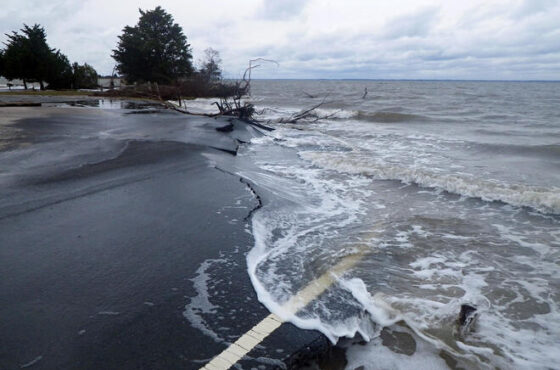A Snag in the Effort to Fix Pennsylvania’s Solar Market
Published by the Natural Resources Defense Fund
Last fall, Pennsylvania lawmakers set out to fix a problem with the state’s 2004 Alternative Energy Portfolio Standards Act (AEPS).
No, the problem they took on with Act 40 of 2017 was not the weakness of the renewable energy targets in the AEPS. (Alas, those targets still have not been updated since 2004). Act 40 addressed a more abstruse, but nonetheless important, problem: an “oversupplied” Solar Renewable Energy Credits (SREC) market. Before Act 40, the AEPS allowed solar photovoltaic (PV) projects throughout the PJM region to sell SRECs in Pennsylvania without restriction. This had the effect of depressing SREC prices, which has made solar development less economical in the Commonwealth. Act 40’s fix was to establish new, more restrictive SREC eligibility criteria in order to spur more in-state solar development, and thereby deliver more clean air benefits to Pennsylvanians.
So far, so good. But in December, 2017, the Pennsylvania Public Utility Commission (PUC), the agency that will administer Act 40, proposed an interpretation of the law that would completely undermine its purpose. From a legal perspective, the PUC’s interpretation is mistaken. Practically speaking, the controversy over Act 40’s construction underscores the need for Pennsylvania to strengthen the solar (and other renewables) targets in the AEPS. But for the meagerness of those targets, Act 40 might not be needed at all.
PA’s SREC problem: Lots of Supply, Not Much Demand

Pennsylvania Solar Energy Industries Association
The solar photovoltaic (PV) target in the AEPS is 0.5 percent of retail electricity sales in 2020, a goal that Pennsylvania has been slowly inching toward since 2006. (See the graph above).
Electricity distribution companies (i.e., utilities) and electricity generation suppliers (EGS) meet these targets by buying SRECs generated by qualified solar projects. (Each SREC represents one megawatt-hour of electricity from such projects). Between the smallness of the solar PV targets in the AEPS and the large number of SRECs that have poured into Pennsylvania’s Alternative Energy Credit market (in 2017, more than 60% of all the SRECs that utilities and EGS bought for AEPS compliance came from other outside Pennsylvania), the market is “oversupplied” with SRECs – i.e., there are more SRECs for sale than utilities and EGS need to buy.
As a result, SREC prices have plunged from more than $300 in 2010 to less than $5 today. These low prices make solar development in Pennsylvania harder, because solar projects are financed partly through the sale of the SRECs those projects will generate.
Act 40’s Fix
Act 40’s solution to this problem was to establish more restrictive criteria for solar PV projects to sell SRECs in the Pennsylvania market (while leaving unchanged the criteria for those projects to sell Tier I Alternative Energy Credits).
Under the new SREC criteria, a solar project must (1) deliver electricity to the customer of a Pennsylvania electric utility, (2) be connected to an electricity distribution system operated by a Pennsylvania utility, a Pennsylvania municipal electric system, or a Pennsylvania electric cooperative, or (3) be connected to a transmission system located within the service area of a Pennsylvania utility.
According to comments submitted to the PUC by State Senator Mario Scavello (R-40), the author of Act 40’s solar provisions, the intent of the provisions is that “out-of-state systems will no longer qualify” to sell SRECs in Pennsylvania’s market, so that “[e]lectric distributors will now have to purchase their credits from within the Commonwealth.” Similarly, Governor Wolf touted his signing of Act 40 as an at to “ensure that the benefits of increased renewable jobs, a cleaner environment, and a growing renewable economy will be felt in the commonwealth.”
The PUC’s Misinterpretation of Act 40 (and an Alternative Interpretation)
The clear intent of Act 40 is to exclude out-of-state solar PV systems from Pennsylvania’s SREC market. But in its Tentative Implementation Order (TIO) for Act 40, the PUC proposed to “grandfather” such systems into the market. The basis of this interpretation is of a provision in Act 40 that states:
Nothing under this section … shall affect … a certification originating within the geographical boundaries of this Commonwealth granted prior to the effective date of this section of a solar photovoltaic energy generator as a qualifying alternative energy source eligible to meet the solar photovoltaic share of this Commonwealth’s alternative energy portfolio compliance requirements under the “Alternative Energy Portfolio Standards Act.
According to the TIO, this section requires the grandfathering of all solar PV systems previously “certified” for Pennsylvania’s SREC market – regardless of location – on the grounds that the administrative act of certifying them took place inside the Commonwealth. But as comments submitted by NRDC and several other environmental organizations point out, the TIO’s interpretation is untenable, among other reasons because it ignores legislative intent and strips the phrase “within the geographical boundaries” or any meaning.
Fortunately, PUC Chair Gladys Brown and Vice Chair Andrew Place have proposed an alternative reading of this language. Recognizing that Act 40 does not define “certification” and acknowledging the clear intent of the General Assembly, Brown and Place would read a certification as originating in Pennsylvania only when the solar system being certified is located in Pennsylvania. NRDC, as well as Senator Scavello and other legislators, have urged the full PUC to embrace this interpretation, which would grandfather only Pennsylvania solar systems.
What’s Next?
The PUC’s public comment period on the TIO and the alternative interpretation offered by Chairwoman Brown and Vice Chair Place ends on February 5, 2018. After that, the PUC will issue a final Implementation Order.
Meanwhile, whatever the content of the final Order, the other factor driving low SREC prices in Pennsylvania – tepid demand, due to the AEPS’s weak renewable goals of 8 total percent renewable energy with a mere half-percent solar carve-out – remains. Pennsylvania’s renewable energy industry today supports nearly 10,000 jobs, and the state is home to more than 500 solar businesses, including installers and manufacturers of PV cells and other components. These businesses are helping homes and businesses meet their electricity needs without harmful greenhouse gas emissions. With the AEPS set to plateau in 2021, the state needs to set more aggressive, long-term targets to realize the economic and environmental potential of solar energy in the Commonwealth.
Now it is incumbent on Governor Wolf, along with the architects of Act 40, the business community, solar owners and the public, to weigh in on its implementation and ensure the commission truly does away with this harmful loophole. If the PUC interprets Act 40 consistent with legislative intent, it will provide Pennsylvania with an economic and environmental boost, especially if the General Assembly and Governor Wolf go one step further and strengthen the state’s clean energy standards. Will the policymakers get it right?
The PUC’s Act 40 docket is accessible here.
Read the full article at: https://www.nrdc.org/experts/mark-szybist/snag-effort-fix-pennsylvanias-solar-market





